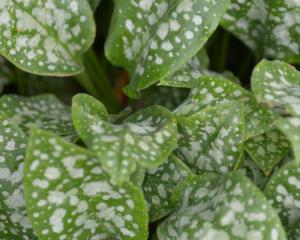
Low growing and evergreen, Andromeda polifolia is sometimes referred to as bog-rosemary, alluding to the habitat it grows in and the narrow rosemary-like leaves. The leaves are actually twice as wide as they first appear as the edges are rolled inward. Flowers are typical of the heath family — globose and pendulous and carried in clusters. Individual flowers are small and dainty but when produced en-masse they make a stunning display. Native to northern parts of the northern hemisphere, Andromeda grows in bogs or where there is a lot of peat, its spreading stems creating self-layering carpets.

See these and many other garden treasures during a free tour of the rock garden and theme borders on Wednesday October 16 at 5.30pm. Meet at the information centre in the lower Botanic Garden.
Garden Life is produced by Dunedin Botanic Garden. For further information contact Robyn Abernethy.












